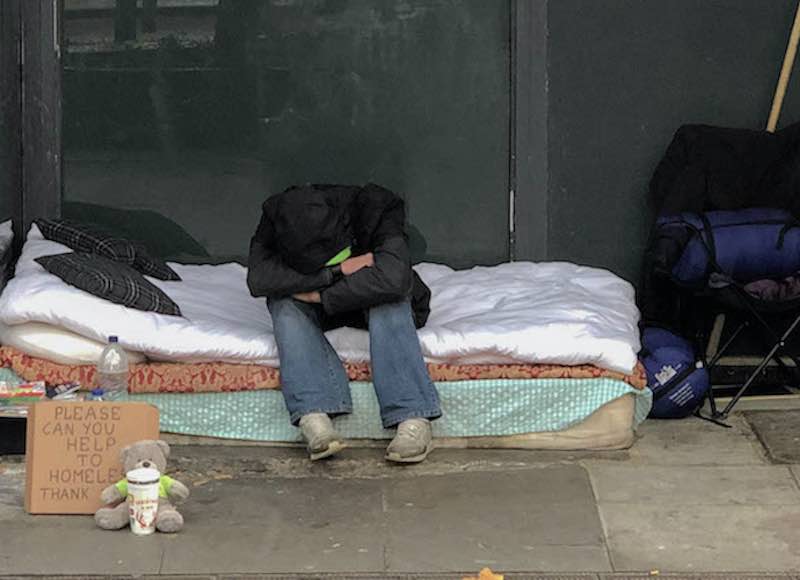At the start of the virus lockdown, there was a big effort, backed by the government and City Hall, to get London’s thousands of rough sleepers indoors. By the start of April, one of the capital’s leading charities for the street homeless, Thames Reach, believed most of them were.
Hotel rooms had been made available, including 300 in Westminster, where many rough sleepers are found. By the middle of that month, more than 1,000 people had been accommodated and one of the hotels, near City Airport, had special facilities for residents showing coronavirus symptoms. What has happened since?
It will not be a surprise to learn that rough sleeping in London has far from gone away. The most recent quarterly report from the Combined Homelessness and Information Network database (CHAIN), covering April, May and June of this year, says that across Greater London as a whole outreach teams recorded 4,227 people sleeping rough, which was up by one third compared with the same three-month period in 2019.
Of these, 2,680 were sleeping rough for the first time compared with 1,513 for the same period in 2019. Better news is that of the 2,680, 81% were only seen once and a further 18% who were did not become habitual rough sleepers, deemed to be “living on the street”. Also, the overall number of people categorised as living on the street was, at 264, a third lower than during the same quarter last year. As is usual, the main concentrations of all rough sleepers were in Central London with a considerable number near Heathrow.
What has happened to those rough sleepers, already known about at the start of the pandemic, who benefitted from hotel rooms being made available? There is only one London hotel still housing rough sleepers from the emergency action (it’s in Waterloo0) for various reasons. Thames Reach clients stayed in two hotels that were paid for by the GLA: the one near City Airport and another in Pimlico, which closed in June. Others were put up in a budget hotel in Clapham.
Eighty-five clients were assessed at the two GLA-funded hotels and most have now moved on, the majority into private rented housing. Some of these are benefiting from special “close support” from a new Thames Reach service, which helps people coming out of the “everyone in” hotel period into longer-term accommodation.
The advent of Covid has also meant the charity adjusting to the closure of the No Second Night Out service (run by another leading charity, St Mungo’s) which had provided emergency beds and assessments for new rough sleepers. These couldn’t be kept open because of social distancing requirements. The outreach service is being adjust accordingly.
On London will continue it coverage of rough sleeping in the capital, picking up on some of the new strands in the work of the charity sector.
Update, 9 September 2020: The Mayor has written to communities secretary Robert Jenrick, asking him to help London “prepare for winter homelessness” and the CHAIN annual report for 2019/20 has just been published (it doesn’t cover the Covid lockdown period)
Photograph by Omar Jan.
https://www.onlondon.co.uk/what-has-happened-with-london-rough-sleeping-as-covid-lockdown-has-eased/
Dave Hill: What has happened with London rough sleeping as Covid lockdown has eased?

